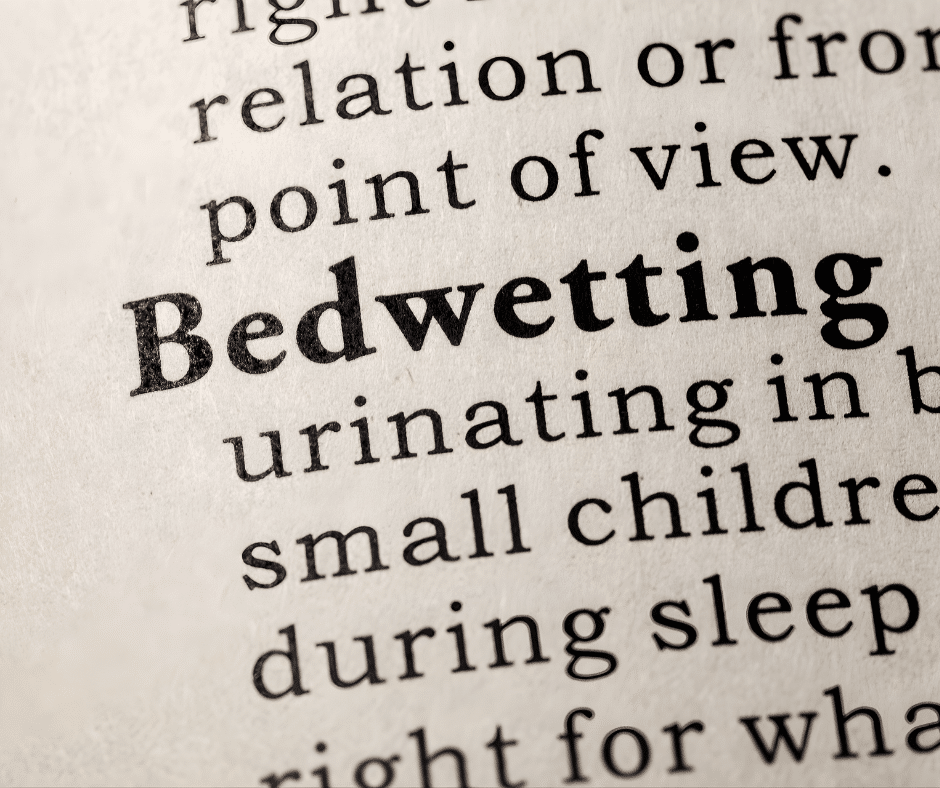Bedwetting
Just when you thought potty struggles were over, a new challenger arrives: Bedwetting. *cue battle music*
Bedwetting can happen for a number of reasons and is relatively common even for school aged children. Some of the reasons can include:
-sleep deeply and find it hard to wake in the night
-make larger than usual amounts of wee at night
-have constipation
-have bladder muscles that are overactive during sleep
-have conditions that interrupt their sleep, like obstructive sleep apnea.
Additionally, bedwetting runs in families. If you wet the bed as a child, your own children might be more likely to wet the bed.
It should be noted that children can’t control bedwetting, and most outgrow it with time. Reassure your child that it’s completely normal, and if they’re curious, you can gently explain some simple reasons why it happens.
When To Seek Help
Consider talking to your child’s Doctor if they’re still wetting the bed regularly around ages 7–8 and you’re worried about things like sleepovers or overnight school trips. It’s also a good idea to check in with the Doctor if bedwetting is beginning to upset or concern your child.
You should also speak to your GP if your child has:
-bedwetting that has started again after a long period of being dry
-snoring or restless sleep that happens at the same time as bedwetting
-constipation.
Ways to Help
If your child wets the bed, try to stay calm and remember — it’s not their fault. Bedwetting is common and usually just part of growing up.
Here are a few practical tips that might help:
-Encourage your child to skip caffeinated drinks like cola, which can make the body produce more urine.
-Remind them to use the toilet right before bedtime.
-Use a night-light so they can easily find their way to the bathroom if they wake up at night.
It’s also best to avoid:
-Waking your child during the night to use the toilet — this doesn’t teach them to wake on their own.
-Limiting evening drinks too much — children still need enough fluids throughout the day.
Tools to Use
Bedwetting alarms are often the first recommended treatment for children aged 7 and older.
These alarms make a sound when your child starts to wet the bed, helping them gradually learn to recognize the feeling of needing to pee and wake up in time.
There are two main types:
-Pad and bell alarm: A rubber mat placed under your child’s bottom connects to a small alarm. When the mat gets wet, the alarm sounds.
-Personal alarm: This attaches to your child’s pajamas or underwear and goes off when it detects moisture.
If you use a bedwetting alarm, it can help to stay in your child’s room for the first week or so. They might need your help waking up and going to the bathroom, and some children may find the alarm confusing or a bit scary at first — reassurance and comfort go a long way.
Most children use the alarm for about 1–3 months, depending on how well they respond. If there’s little improvement after three months, it’s fine to take a break and try again later or explore other options.
Bedwetting alarms are completely safe — there’s no risk of electric shock — but they may not suit children with sensory sensitivities.

